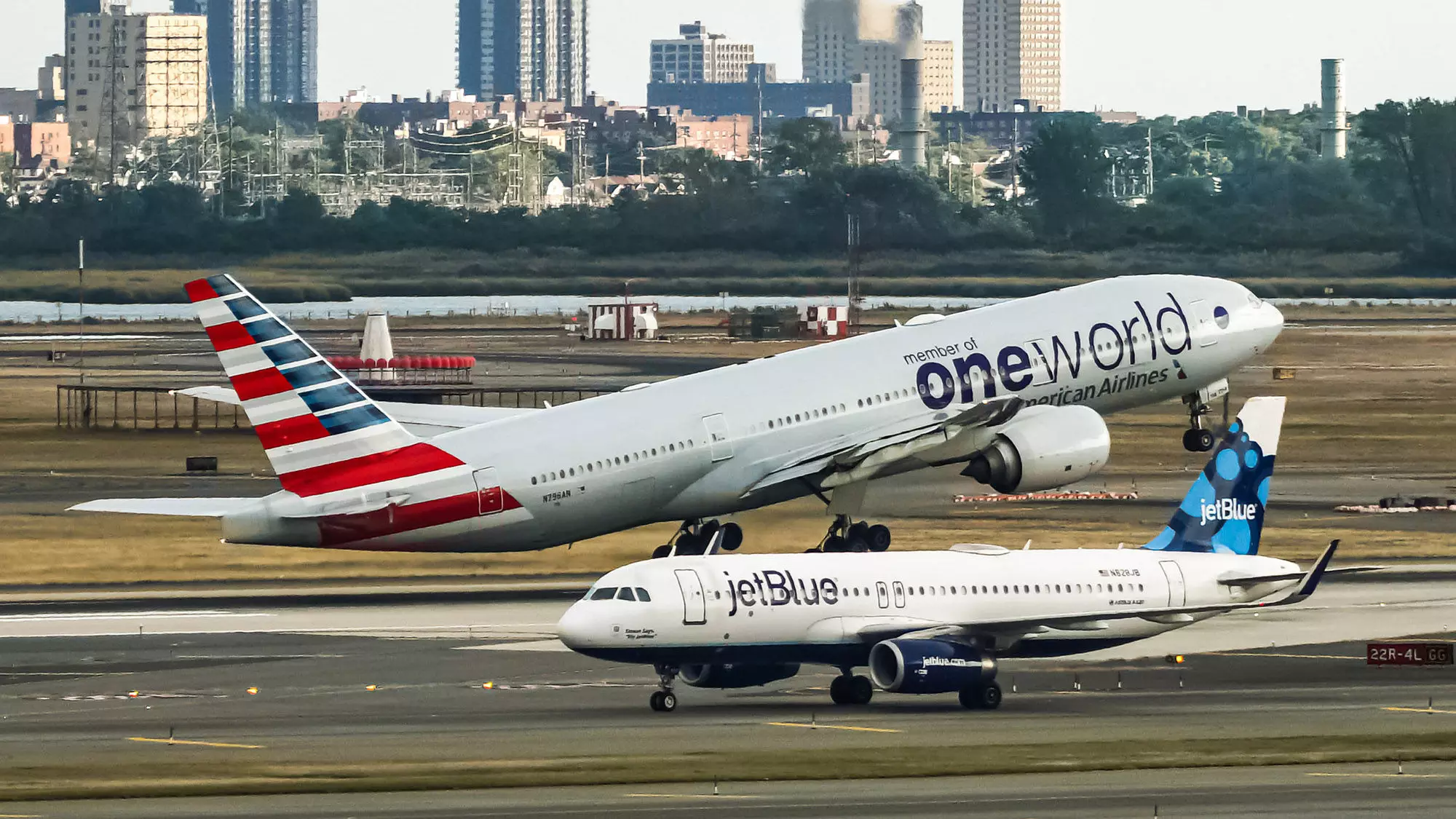The airline industry has long been a battleground of mergers, partnerships, and market strategies, but few alliances have stirred as much controversy and legal strife as the Northeast Alliance (NEA) between American Airlines and JetBlue Airways. Initially hailed as a promising venture, this partnership aimed to consolidate operations across major markets in Boston and New York, ultimately delivering enhanced services to travelers. However, the reality unraveled dramatically when the U.S. Department of Justice stepped in with antitrust concerns, leading to a legal showdown that ended with the dissolution of the NEA. Following this decision, American Airlines found itself locked in a fierce legal dispute with JetBlue, culminating in a lawsuit filed for over $1 million concerning unpaid dues associated with the partnership.
Legal Battles and Antitrust Implications
American Airlines’ lawsuit against JetBlue centers on claims of unpaid revenue derived from the Mutual Growth Incentive Agreement, a critical component of the NEA. The crux of the issue lies in a revenue-sharing model that both airlines previously agreed upon, intended to equitably allocate profits based on incremental earnings from the NEA. It appears that the fallout from the judicial ruling, which deemed the NEA in violation of the Sherman Antitrust Act, exacerbated the tensions between the two carriers. Although both parties had purportedly achieved profitability under this alliance by early 2023, the legal landscape prompted a serious reassessment of their financial arrangements.
The intricate details reveal a tale of financial miscalculation, as American Airlines accused JetBlue of failing to adhere to agreed-upon payments. The documentation shows that after several invoices sent by American over numerous months signaling payments due, JetBlue responded with calculations that were substantially lower than what was expected. This perceived inconsistency raises questions not only about financial integrity but also about the partners’ intentions regarding future collaboration. The situation highlights the intricacies involved in airline partnerships, where legal agreements can quickly shift from profitable ventures to contentious disputes.
A Missed Opportunity for Collaboration
Communication breakdowns, highlighted in a memorandum from American’s Vice Chair and Chief Strategy Officer, Steve Johnson, suggest that the prolonged negotiations to renew the partnership were stymied by diverging interests. Johnson alluded to aspirations of enhancing their network and refining operational synergies, yet noted that discussions faltered when the parameters of a renewed partnership could not be agreed upon. The emphasis on operational and financial rationality encapsulates the broader dilemma faced by airlines in today’s volatile market, where maintaining competitiveness often requires a delicate balance of cooperation and independence.
JetBlue, while not immediately making a statement regarding the litigation, did acknowledge ongoing engagements with American Airlines focused on concluding their business relationship. This vagueness raises additional questions about JetBlue’s strategic outlook in the aftermath of the NEA dissolution. The company’s readiness to distance itself from the contentious history of the partnership while establishing a forward-looking approach to operations is vital if JetBlue wants to restore investor confidence and enhance its long-term viability.
Repercussions for the Airline Industry
The implications of this legal battle extend beyond the two airlines. The rulings against the NEA may set a precedent for how future airline collaborations are approached by regulatory bodies. With antitrust scrutiny rising in various sectors, not only aviation, the fallout necessitates that airlines tread carefully when forging alliances. The NEA’s dissolution serves as a stark reminder that collaboration must align with antitrust laws, consumer interests, and broader economic conditions.
As airline executives brainstorm potential alliances in a constantly shifting industry landscape, they must remain cognizant of the legal ramifications that can stem from inequalities in partnership structures. The NEA saga essentially encapsulates the fine line airlines walk: while seeking operational efficiencies, the risk of legal entanglement looms ever closer.
In sum, the American Airlines and JetBlue case stands not just as a complex legal conflict, but as a cautionary tale about the precarious nature of partnerships in an industry defined by competition, regulation, and consumer demand. The outcome of such disputes could reshape how airlines interact, collaborate, or even compete in the future, marking a pivotal moment in the ongoing evolution of airline business strategies.


Leave a Reply